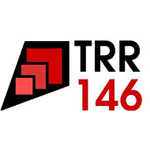
Seminar über Theorie der kondensierten Materie / TRR146 Seminar
May 8, 2015 at
10:30 a.m.
in
Newton-Raum, 01-122, Staudingerweg 9
F. Schmid
friederike.schmid@uni-mainz.de
P. Virnau
virnau@uni-mainz.de
L. Stelzl
lstelzl@uni-mainz.de
Collective Behavior of Active Matter
Dr. Andreas Kaiser (Institut für Theoretische Physik II, Heinrich-Heine-Universität Düsseldorf)
Whereas ordinary materials are passive in the sense that the constituents are typically inert particles, subject to thermal fluctuations, internal interactions, and external fields but with no movement of their own, active matter is composed of self-propelled constituents, like fish and birds or microbes and colloidal microwimmers. In this talk, we will consider three different colloidal systems of active matter.
First are clusters of spherical dipoles. By numerically solving the equations of motion for dipoles which are self-propelled in the direction of their dipole moment, we will show that such clusters can reorganize, reassemble and split due to the self-propulsion. Second, we will consider an active polymer, a polymer with self-propelled beads. We will generalize the Rouse model of polymers and solve it analytically. The swelling of the chain reveals the well known Flory-exponent, even for a self-avoiding chain. While the scaling is not affected, the prefactor changes due to the activity. This allows us to map the system onto an equilibrium chain with a higher effective temperature. Finally, we will show that it is possible to extract a directed motion out of a turbulent bacterial suspension.